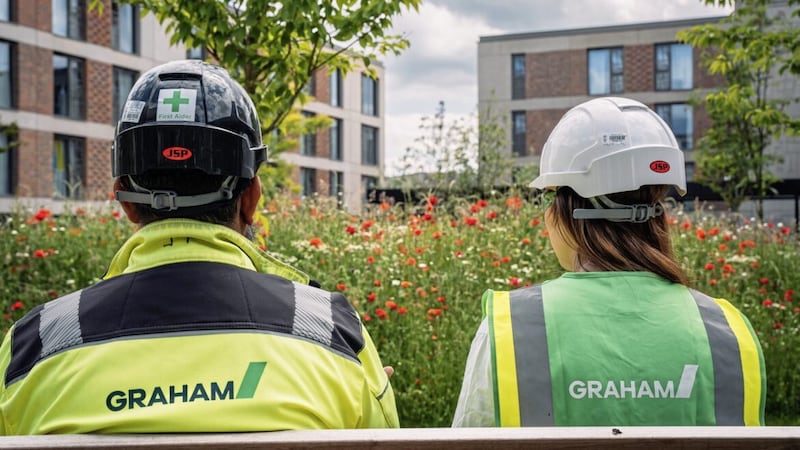THE number of houses sold in the north slumped by nearly a fifth over the summer, although prices during the quarter showed a modest increase, according to the latest Ulster University market barometer.
The closely-watched report, produced in partnership with the NI Housing Executive and Progressive Building Society, says the average house price in Northern Ireland now stands at £206,952.
But the report's authors warn that while the market pricing levels in the July-September period have remained on par with quarter two, there are “obvious signs that a price correction will materialise in 2023”, which is shorthand for the market cooling.
House sales dipped by 18 per cent over the last quarter, and the report says movements by the Bank of England to curb inflation, coupled with continued political instability, has led to an “extraordinary shock” on the market and dwindling consumer confidence.
It comes as UK house prices slumped in October at their fastest rate in 20 months - down by around £1,000, or 0.4 per cent, according to Halifax.
Broken down by local districts, the UU report says Causeway Coast & Glens enjoyed the largest overall price increase in the last quarter (up 14.9 per cent), followed by Mid & East Antrim (up 3.5 per cent).
But on the flip side, there were marked price deteriorations in Fermanagh & Omagh (down 15.3 per cent), Newry Mourne and Down (down 13.3 per cent) and Banbridge & Craigavon (down 7.6 per cent).
The research suggests that fixed rate mortgage deals climbing to over six per cent, in response to the rapidly rising cost of borrowing, has impacted on purchaser affordability and led to a reduction in activity.
“We are currently facing mounting headwinds in the housing market as a consequence of political instability which has seen monetary and fiscal policy pull in separate directions,” according to the report's lead researcher Dr Michael McCord from Ulster University.
“The recent spike in mortgage interest rates as a consequence represents the largest interest rate shock since the 1980s, and despite some signs that they have peaked, we are now in the ‘new norm’ interest rate environment for the foreseeable future.

“And as expected, this increased cost of borrowing has impacted on the housing market which has seen a slowing down in buyer enquiries, affordability and price growth.”
Key findings in the report show:
• The terrace/townhouse sector exhibited the highest annual price changes of 7.4 per cent compared to Q3 202, with the average price now standing at £140,231;
• The apartment sector has seen a 7.1 per cent increase compared to Q3 last year, with its average price in Q3 2022 rising to £149,977;
• The semi-detached sector shows an annual price growth of 3.9 per cent, slightly down on the previous quarter, with the average price now £187,613;
• The detached sector displayed annual price growth of 2.6 per cent, a slight increase on the last quarter of 0.8 per cent, and the average price is now £293,422.
Michael Boyd, deputy?chief?executive?and?finance?director at Progressive, said: “As anticipated, there has been a definite slowing down in the local housing market this quarter with the majority of local government districts seeing a decrease in price from quarter two to quarter three 2022.
“While the political instability and economic volatility has dampened buyer and seller enquiries, prices have remained on a par with quarter two of this year.
“There are indications that moving into the final quarter of the year, there will be a further slowing down of the market with demand falling and a challenging economic year ahead.
“While Northern Ireland’s housing market is resilient and is one of the most affordable regions in the UK, political leadership to support stability will be key for the sector and the wider economy.”








